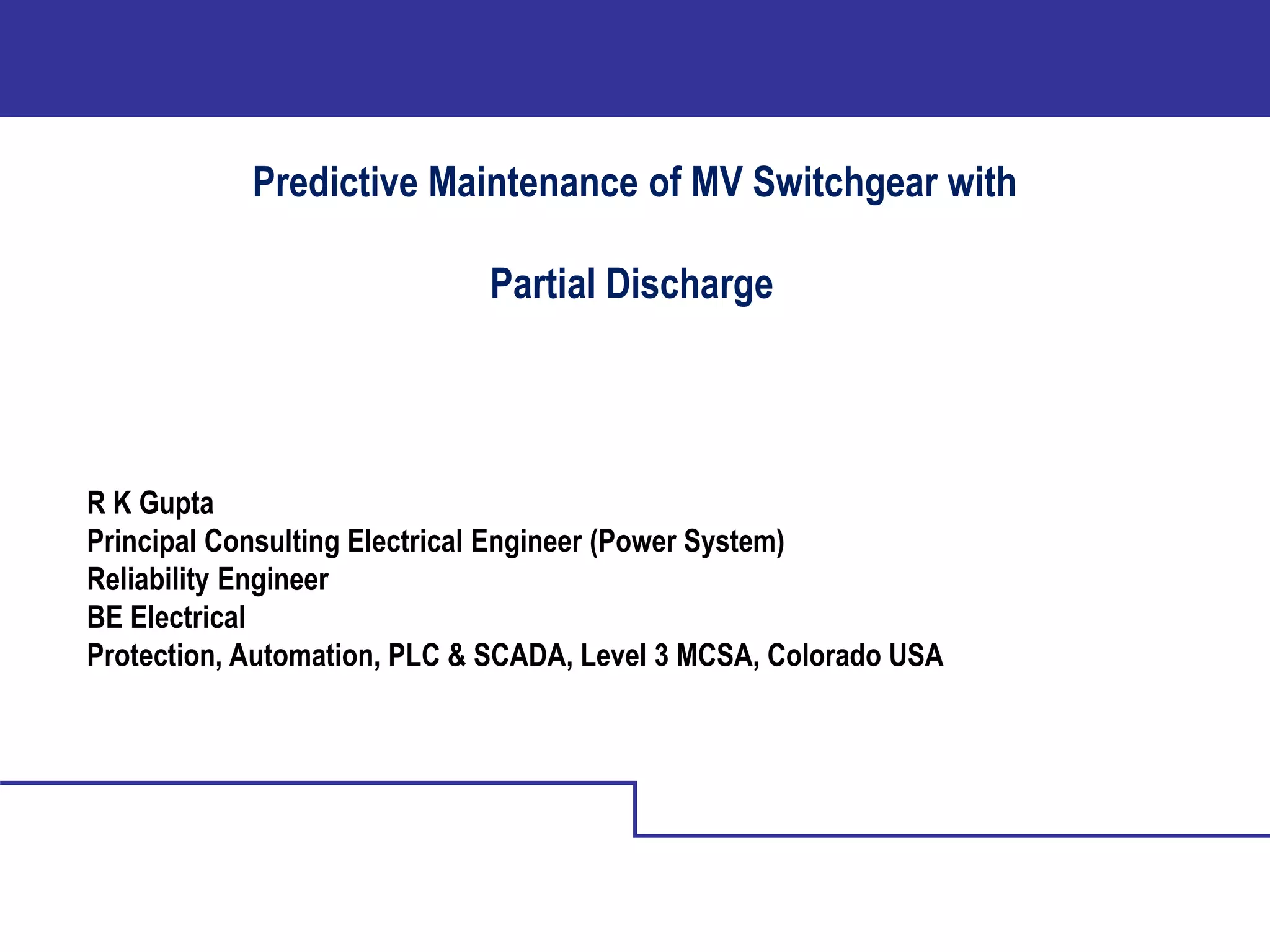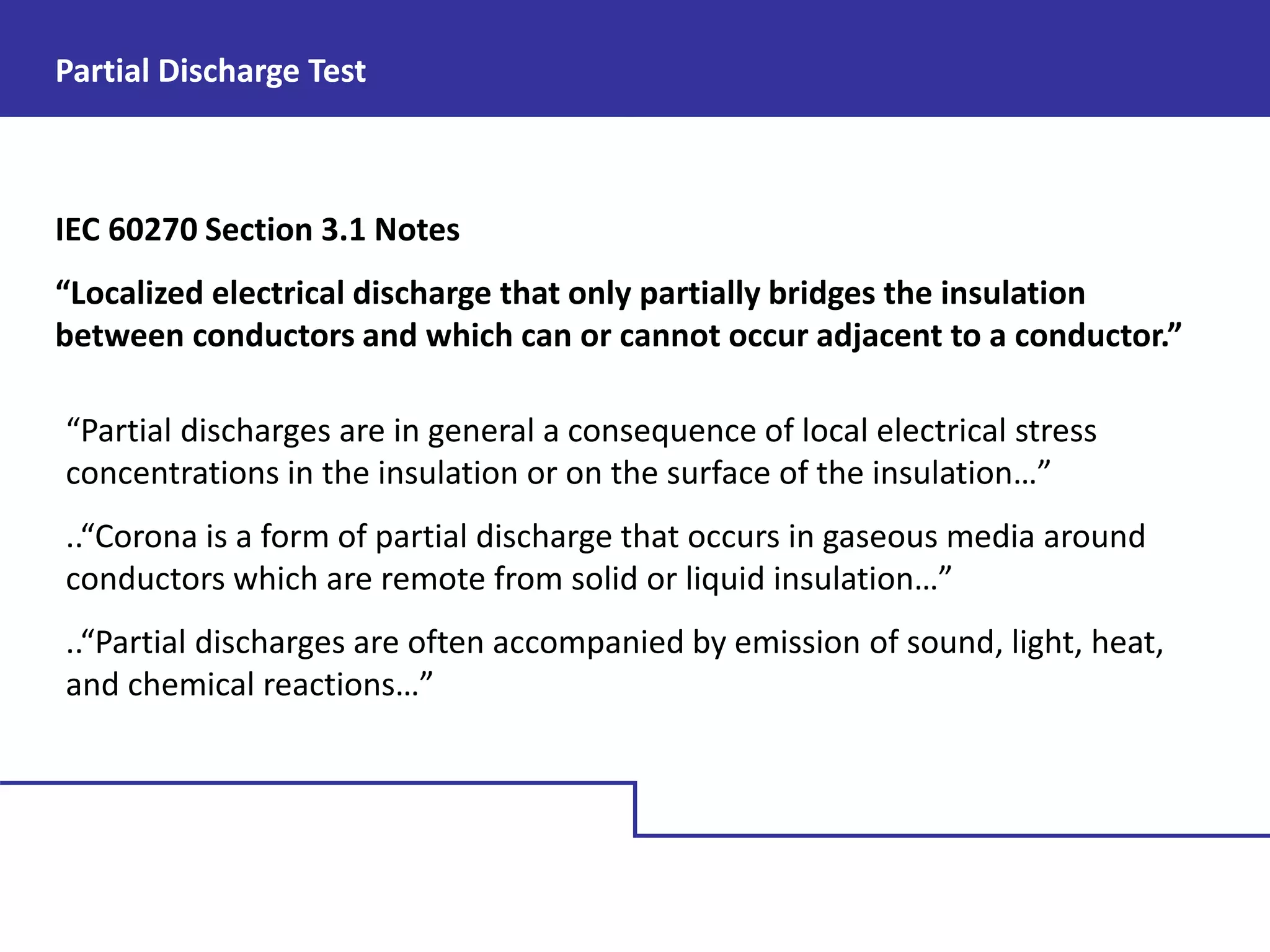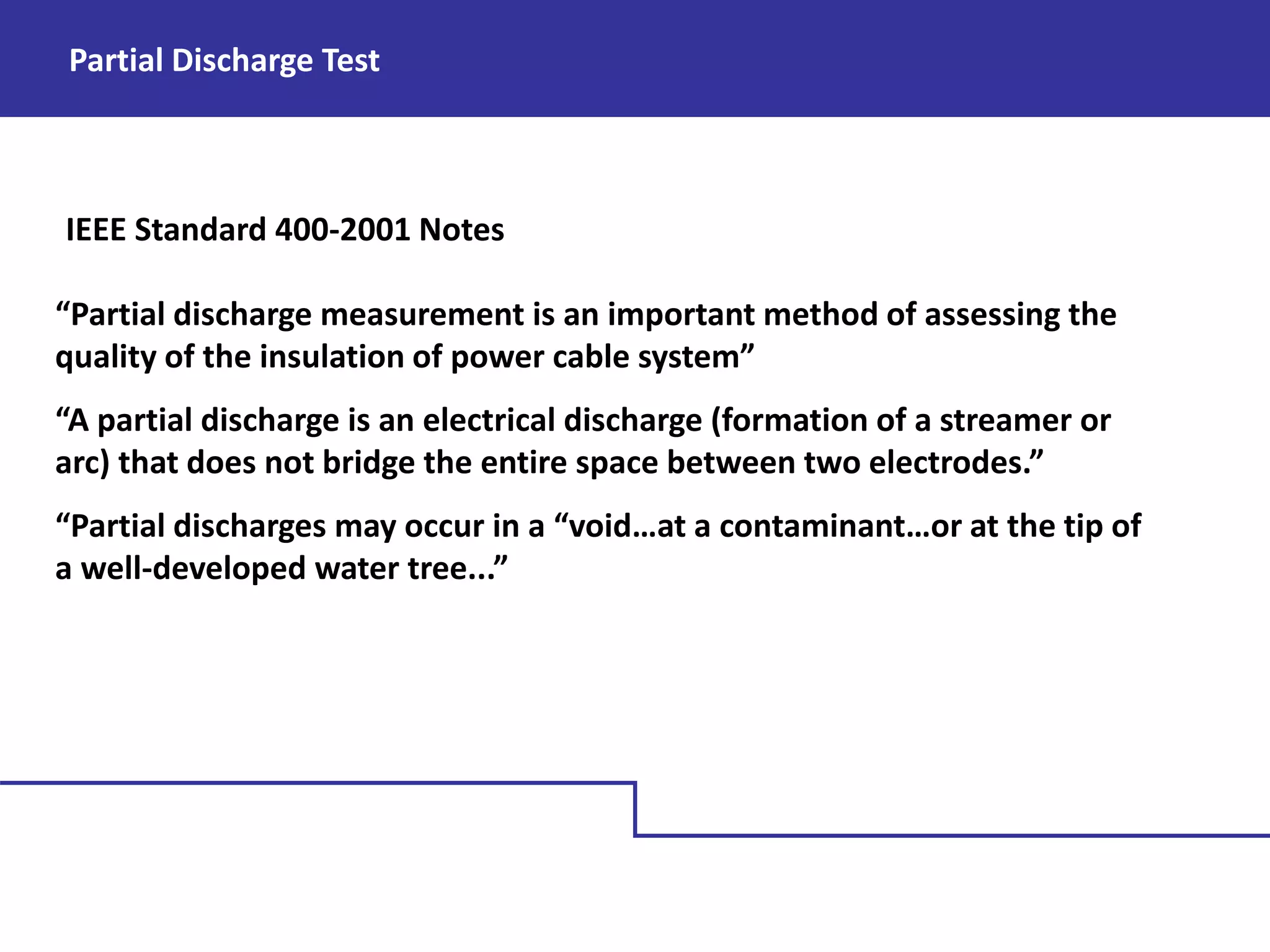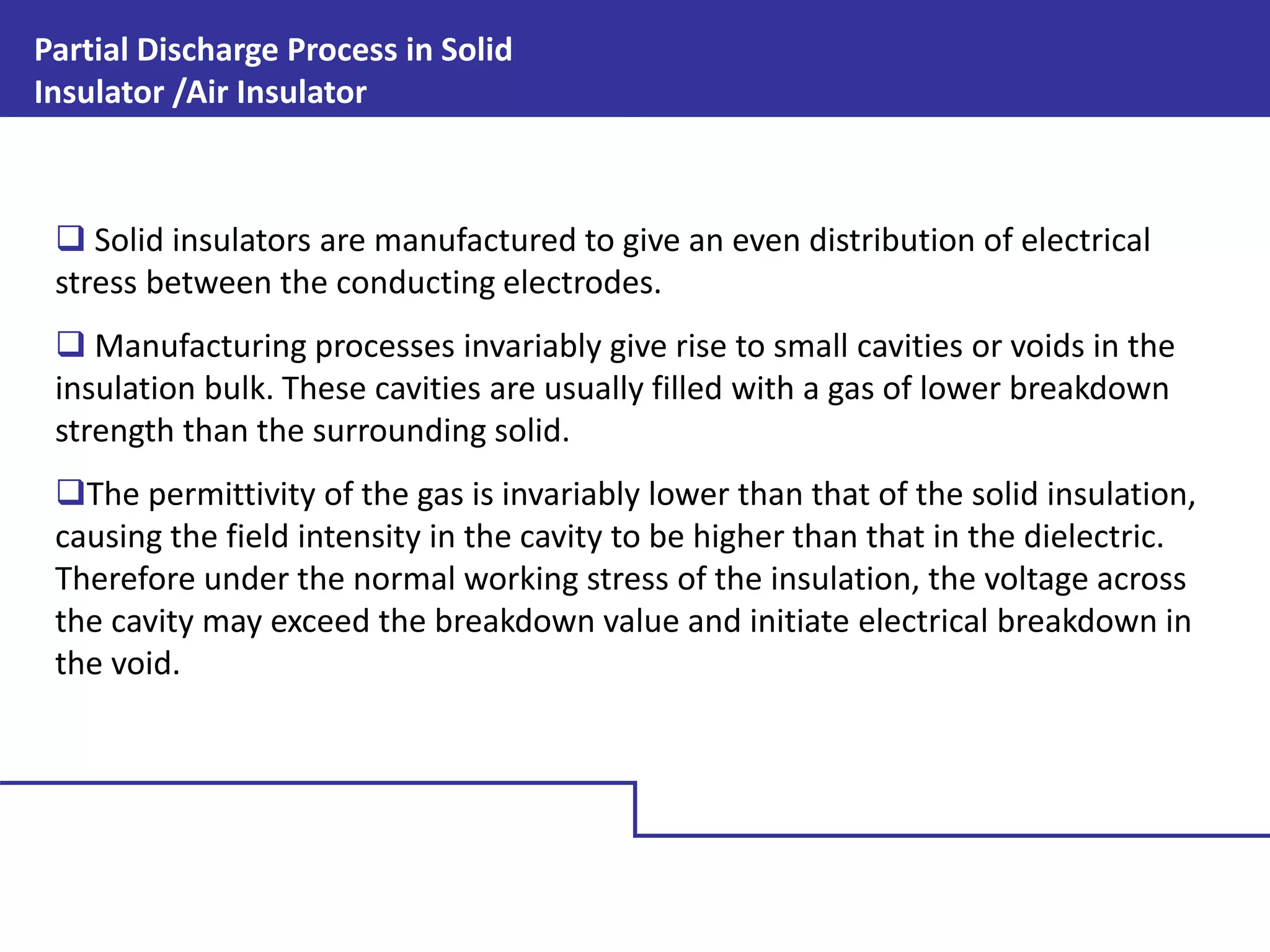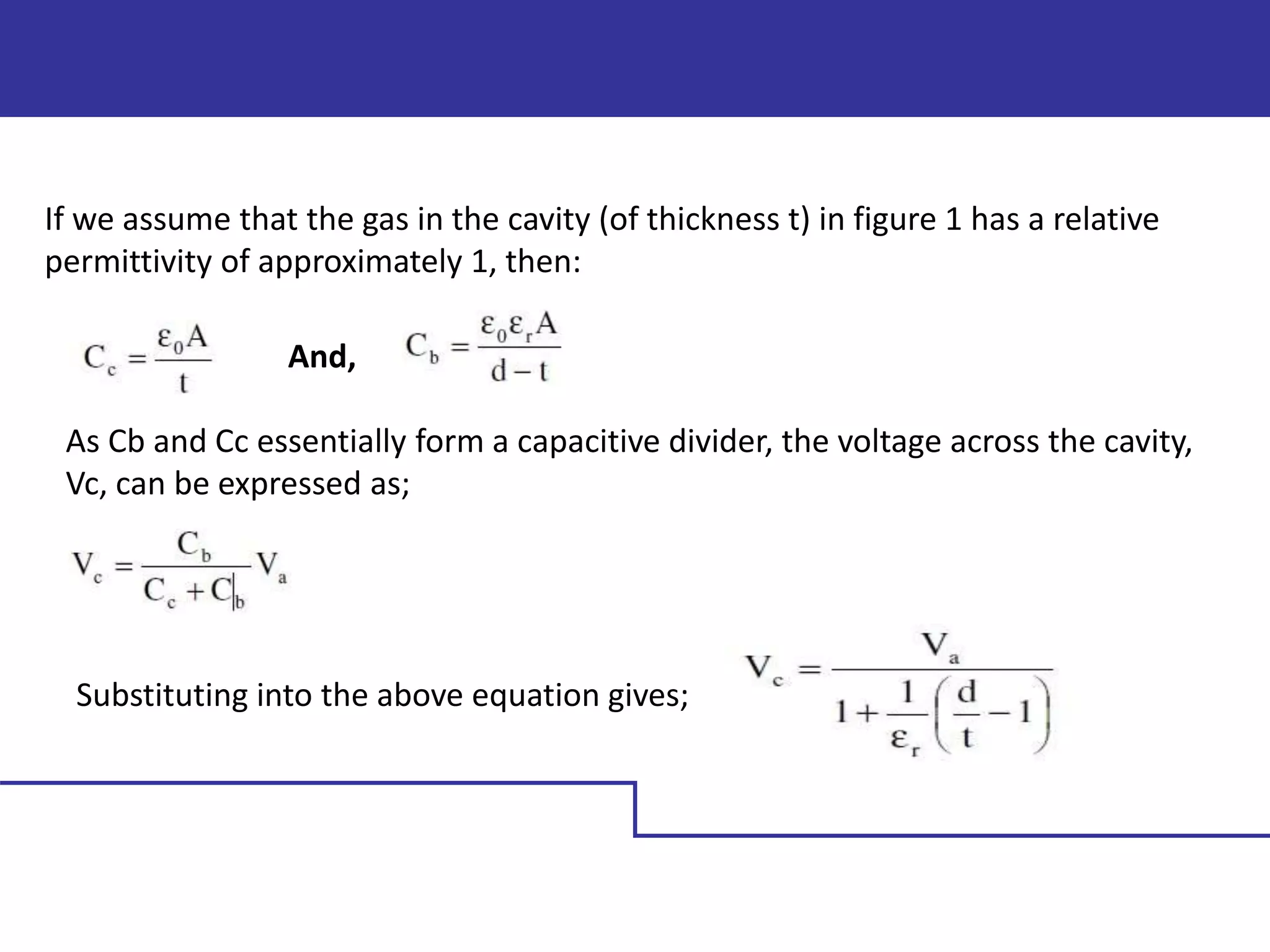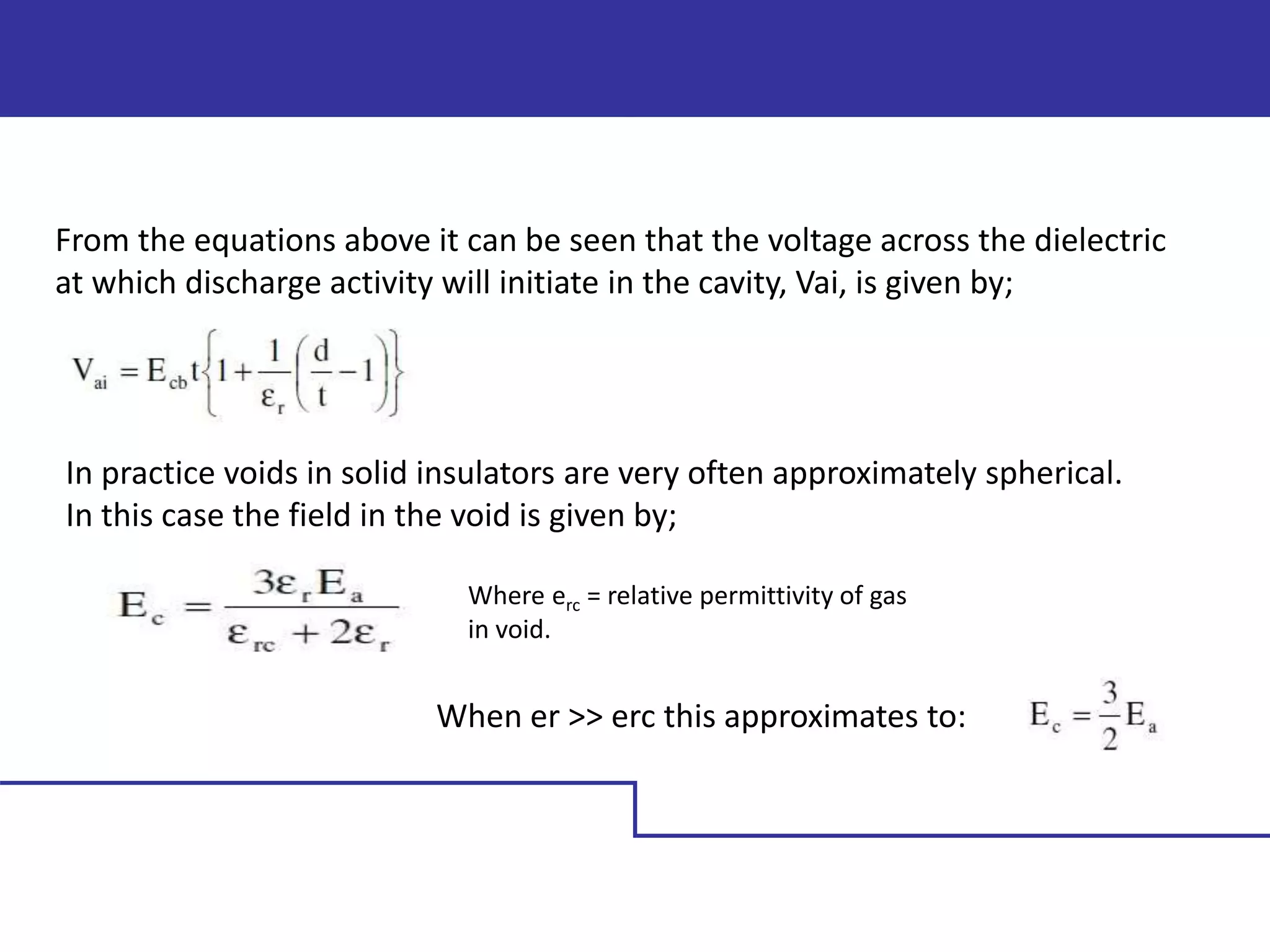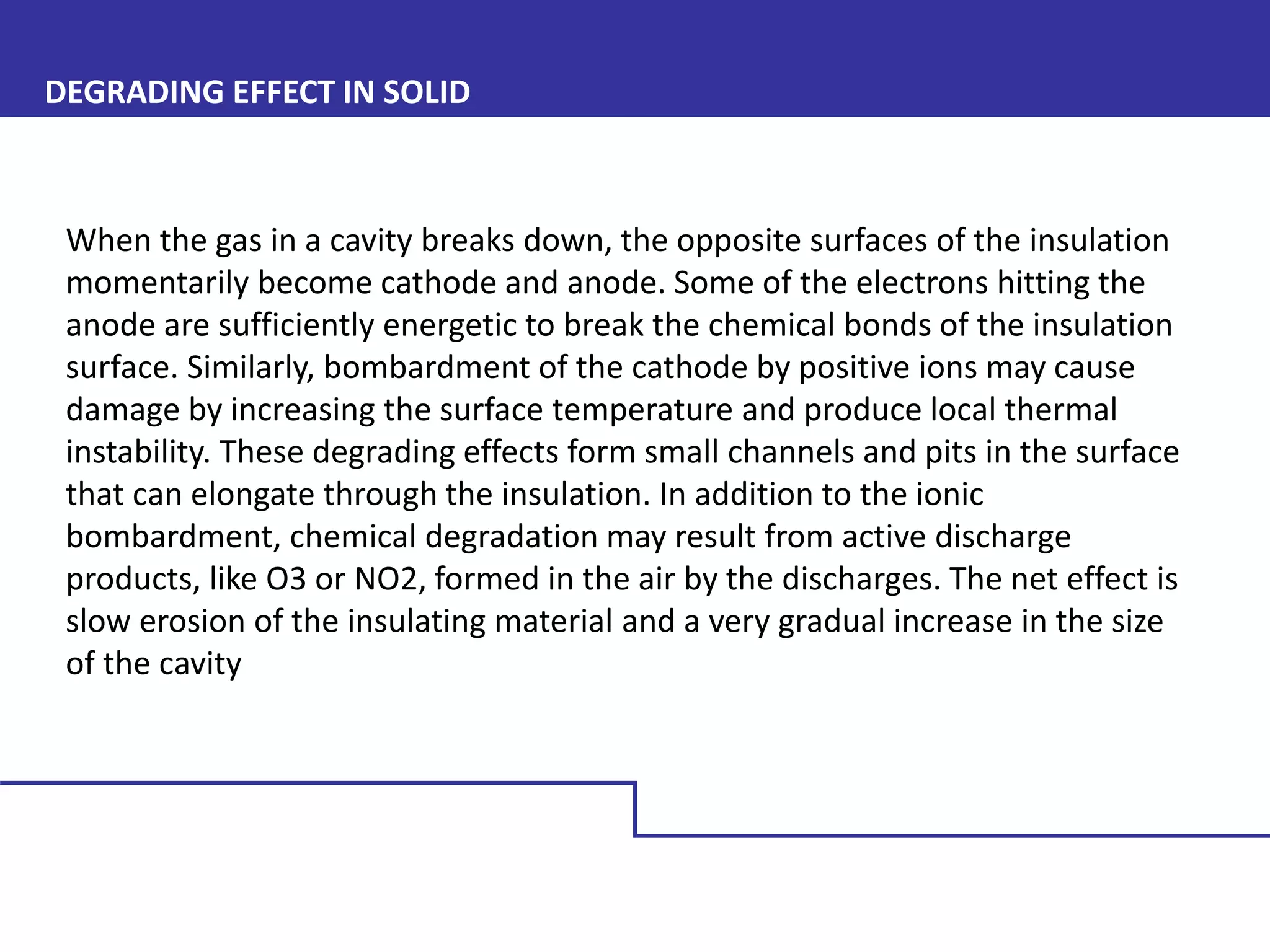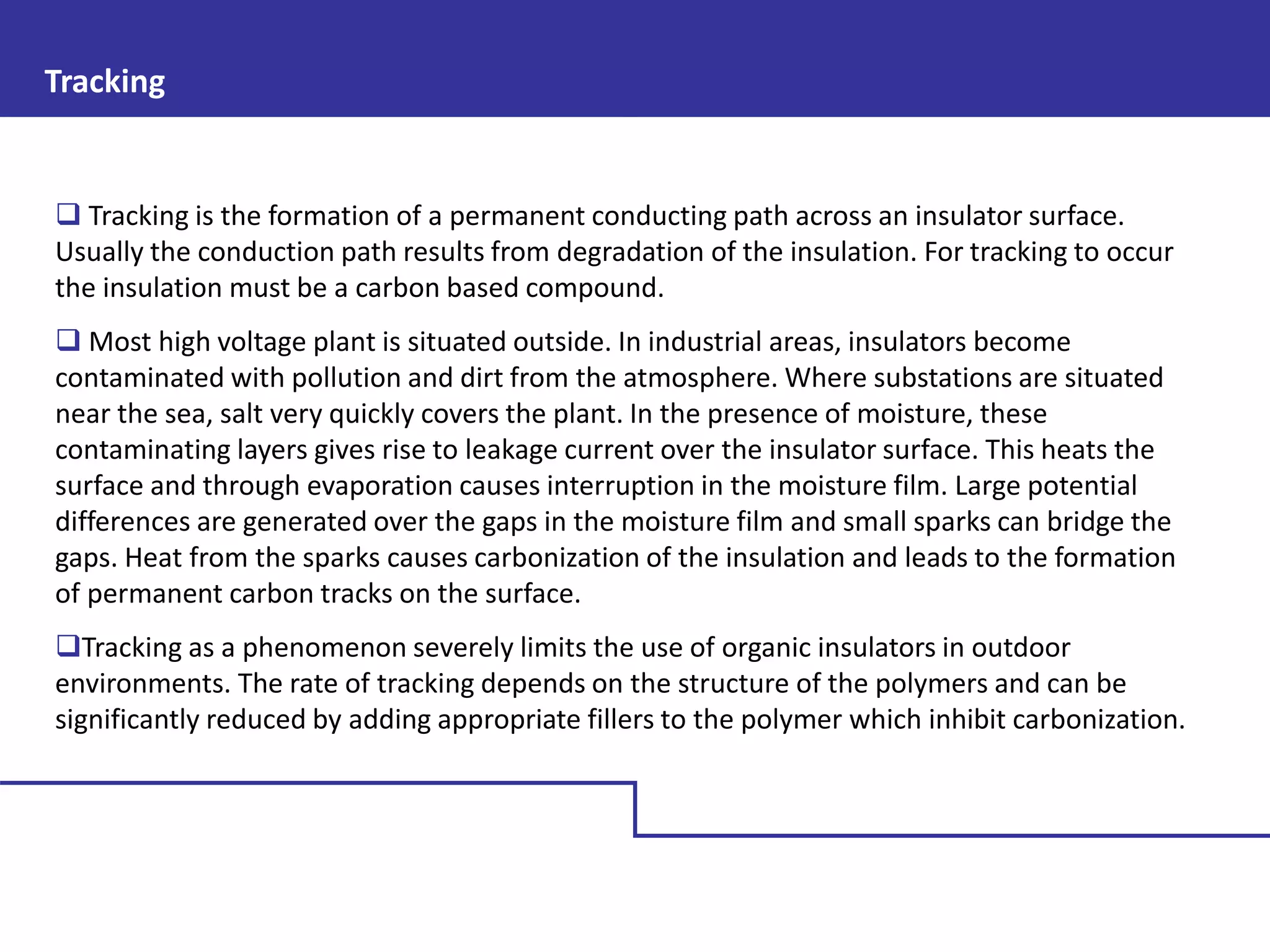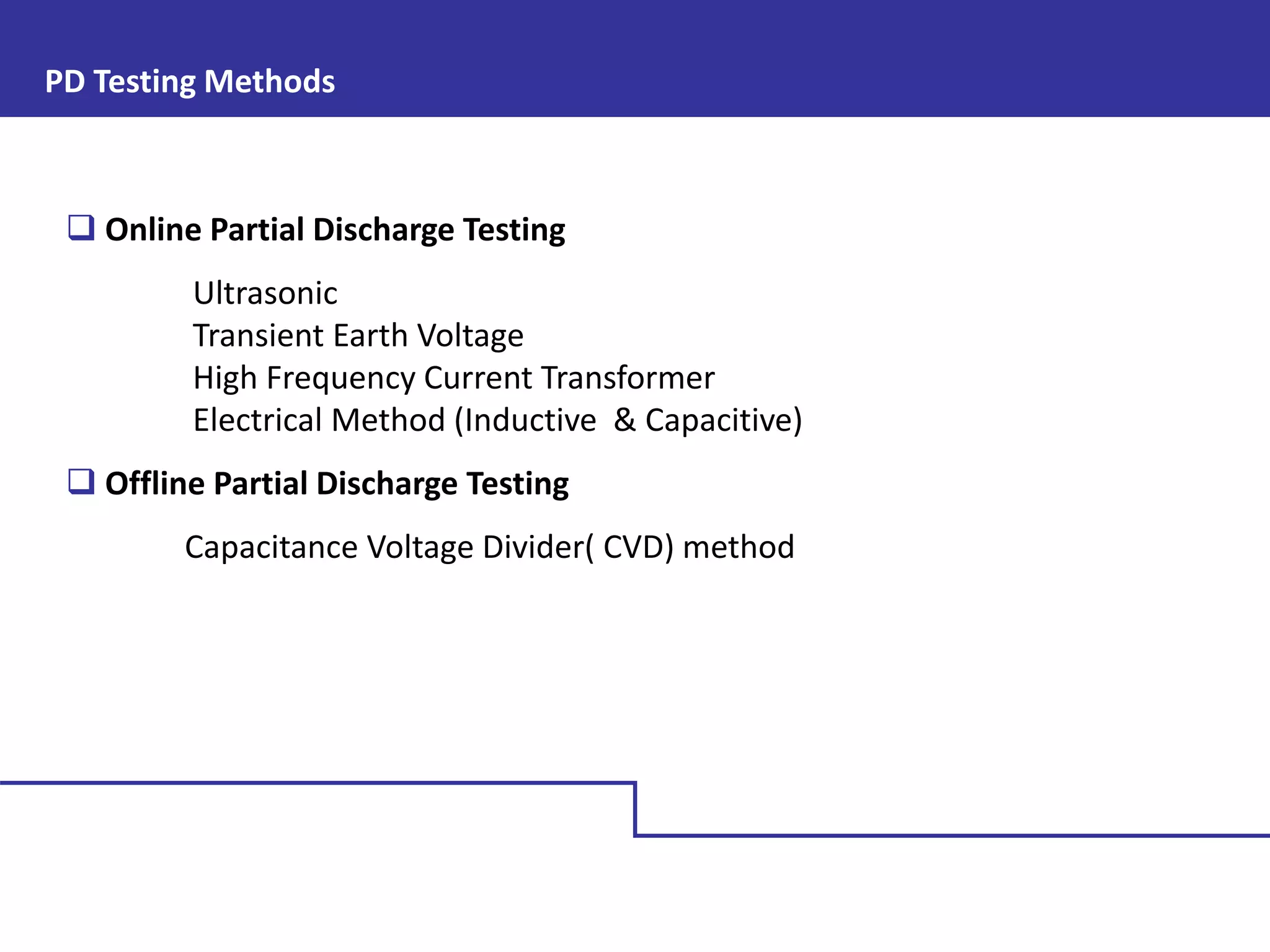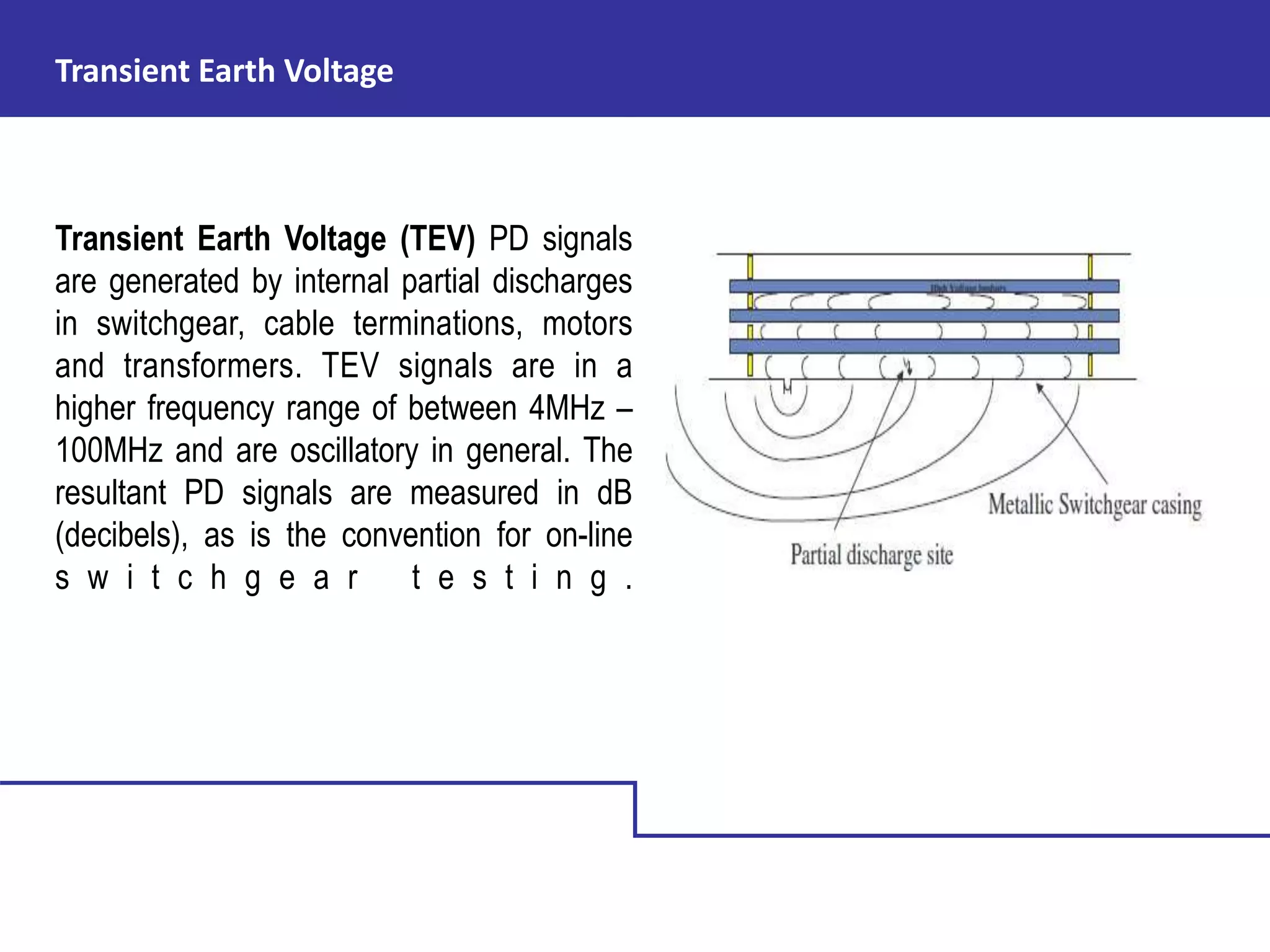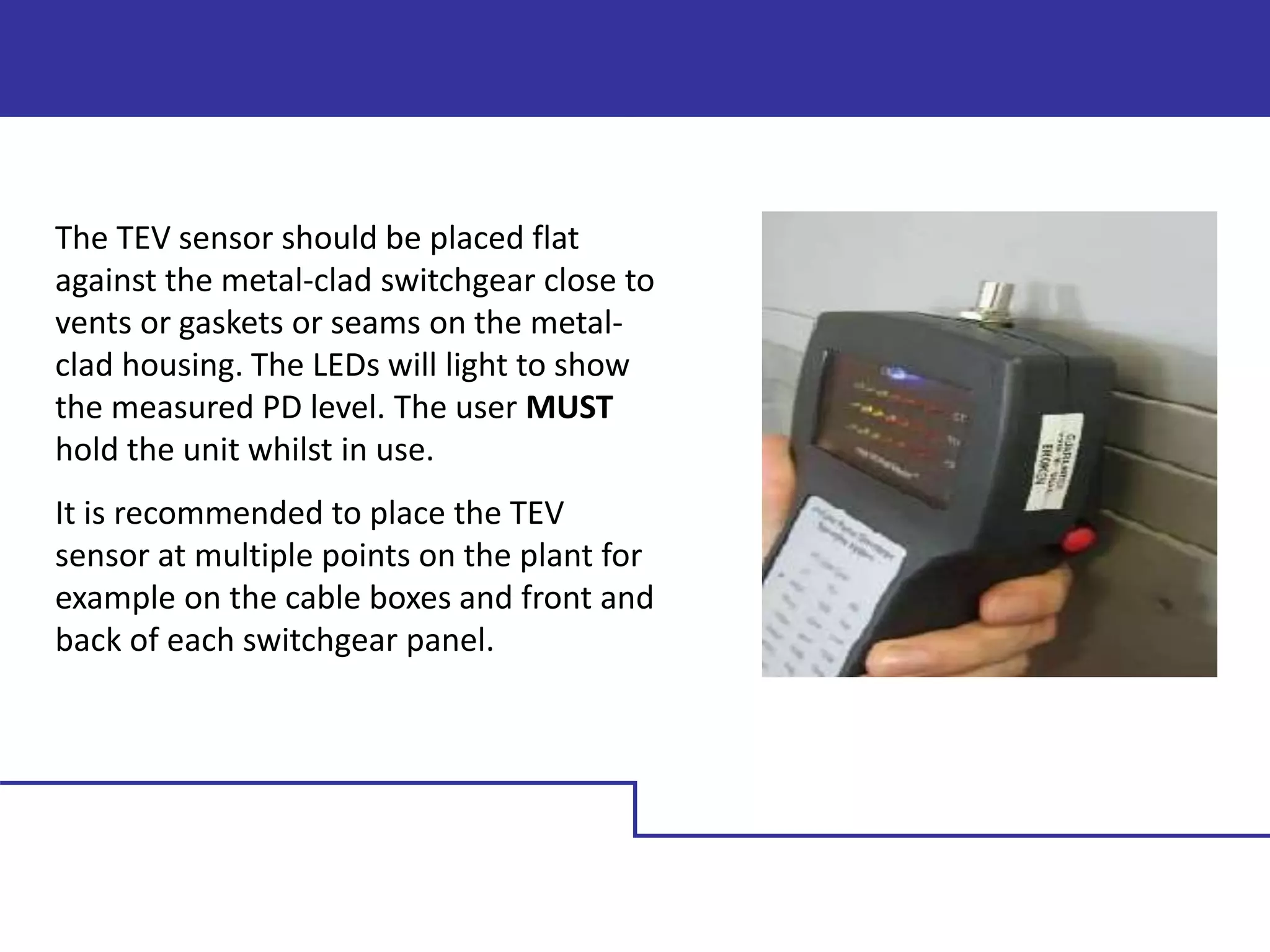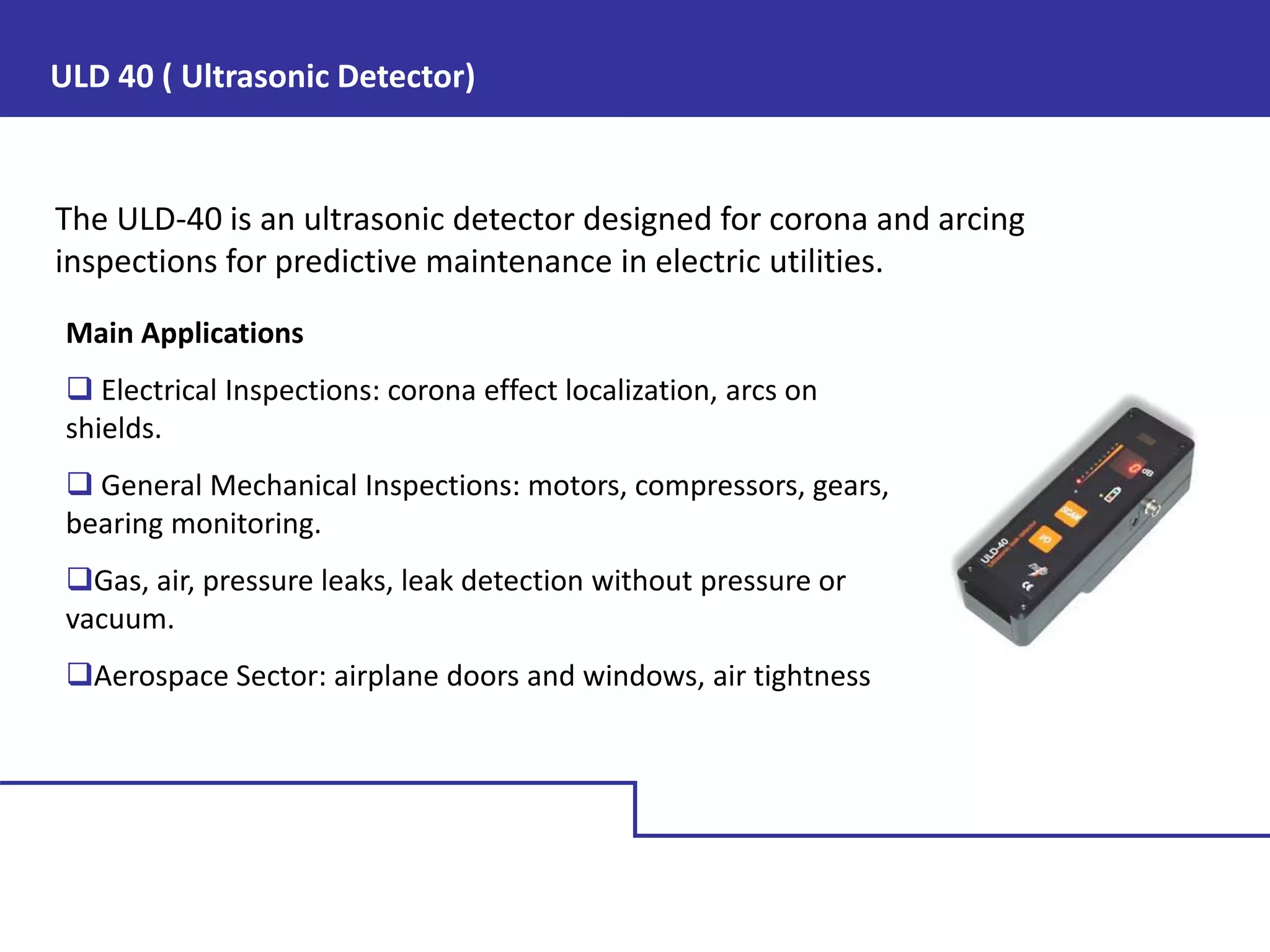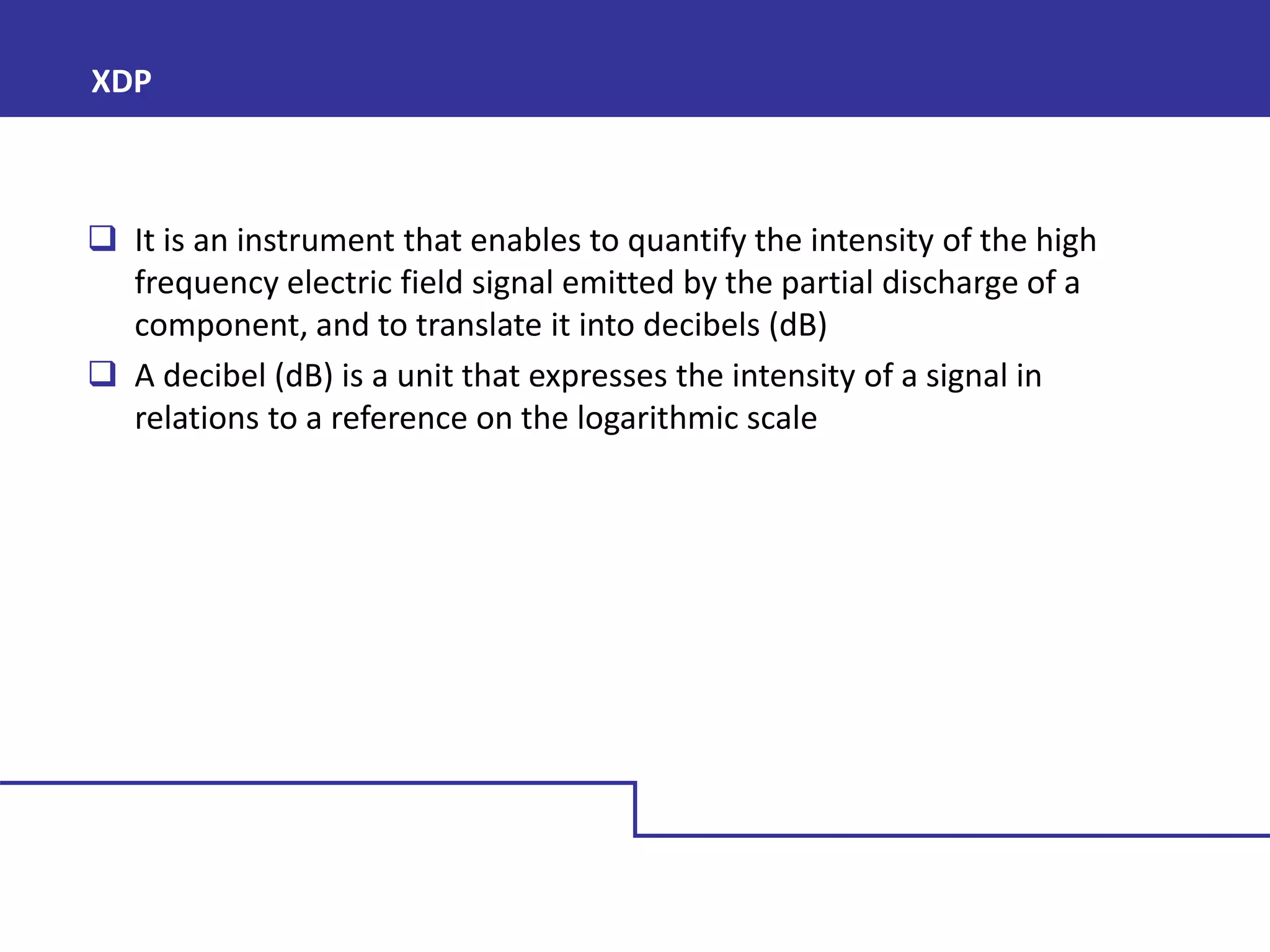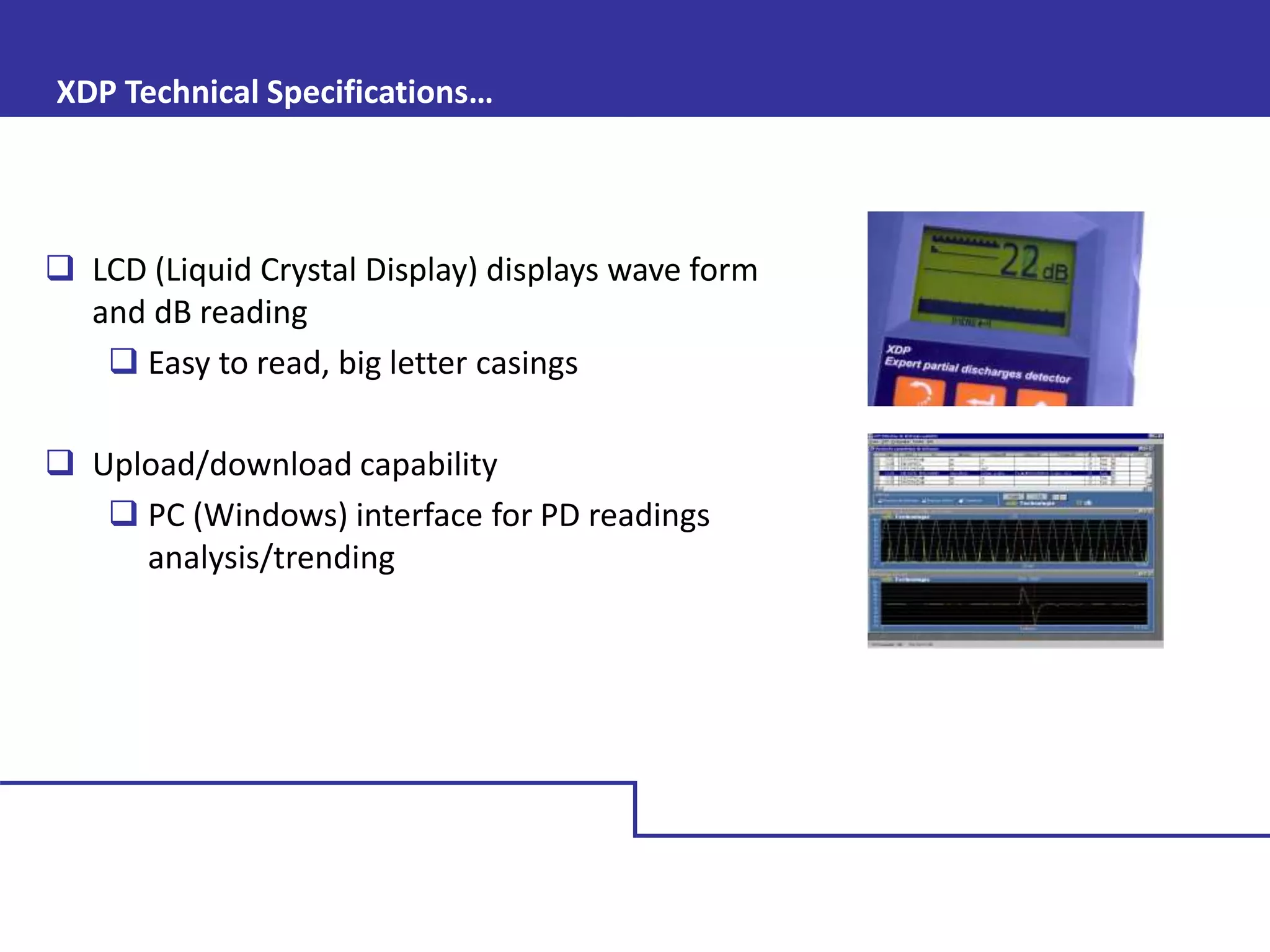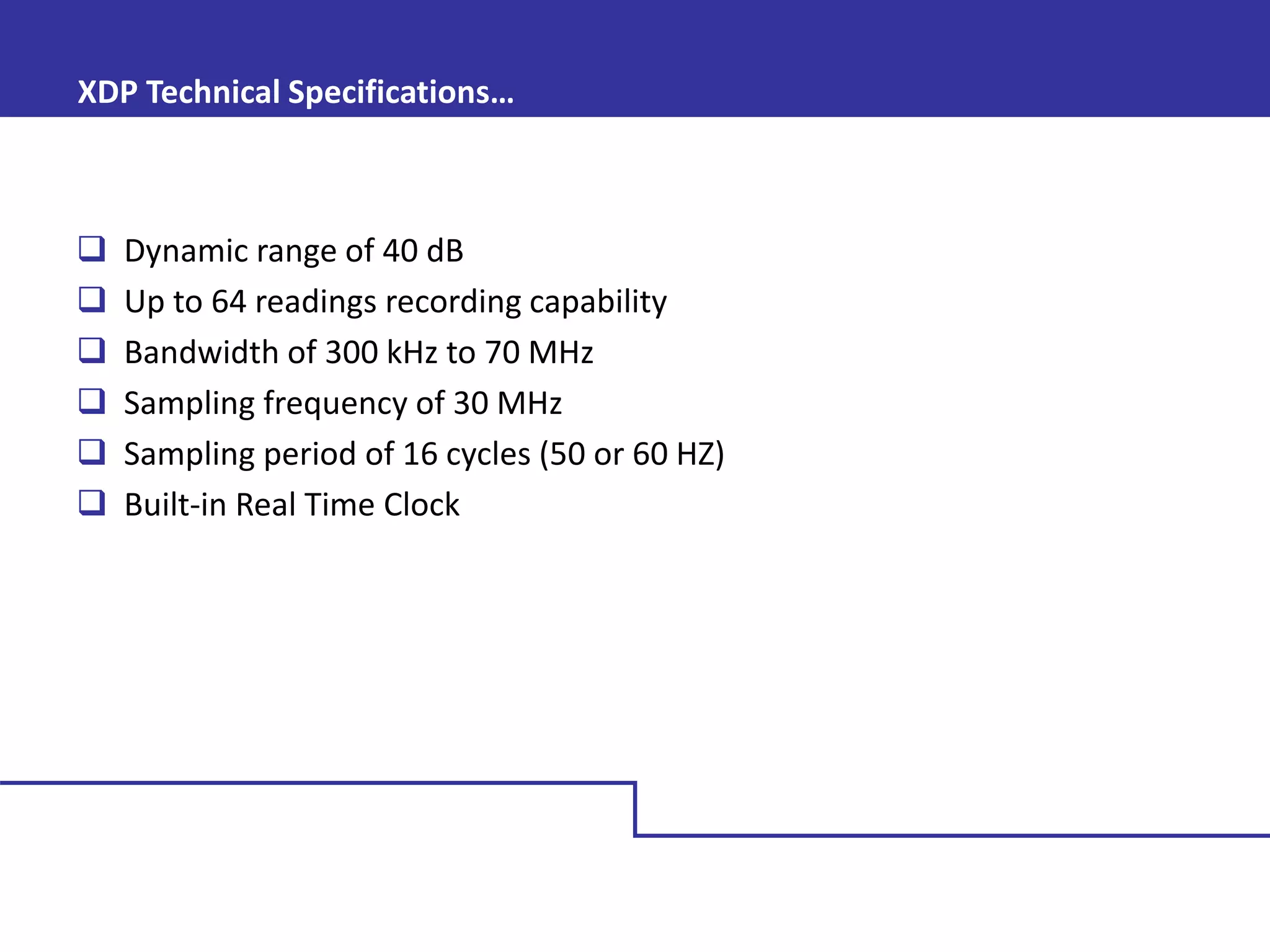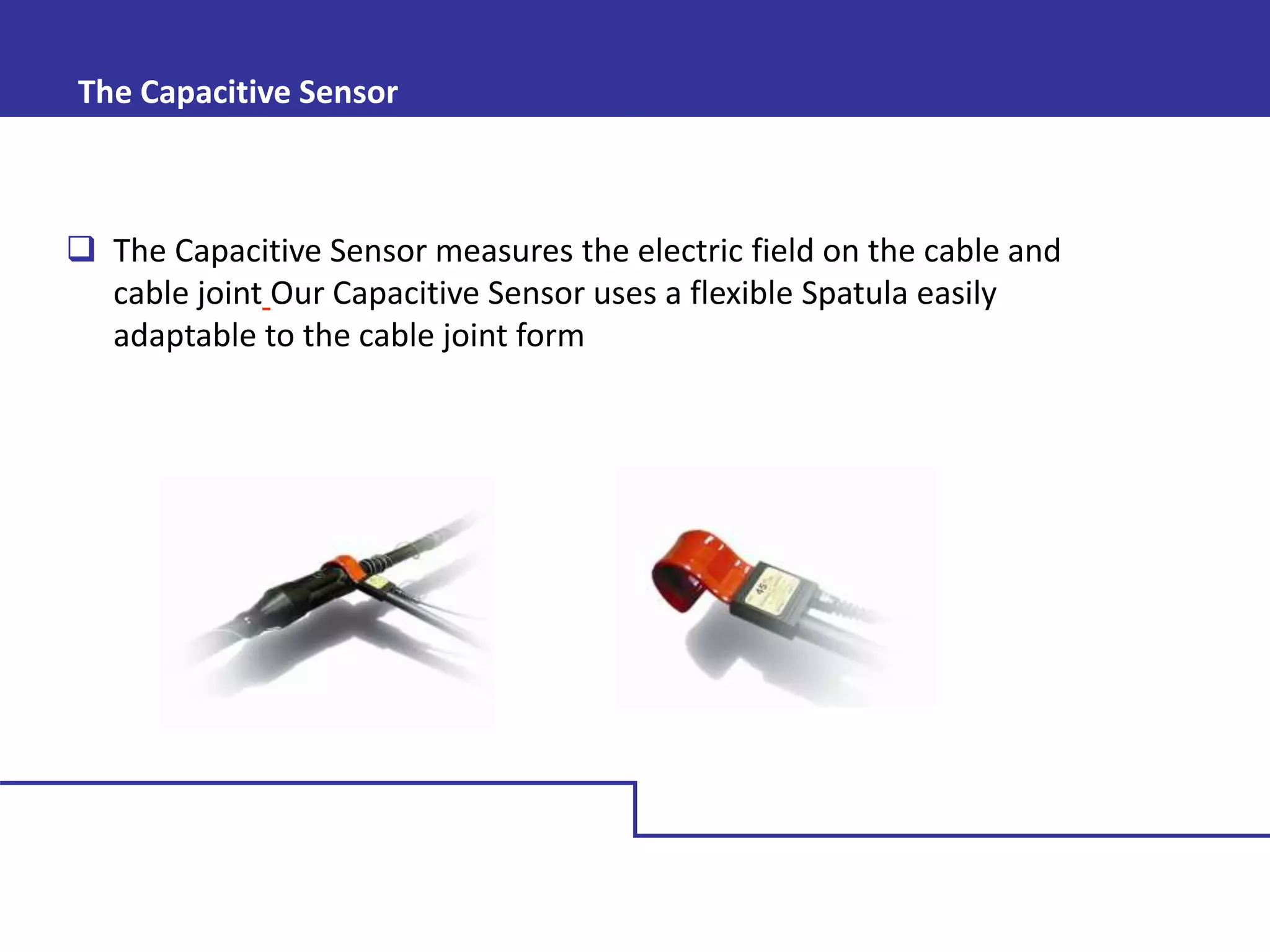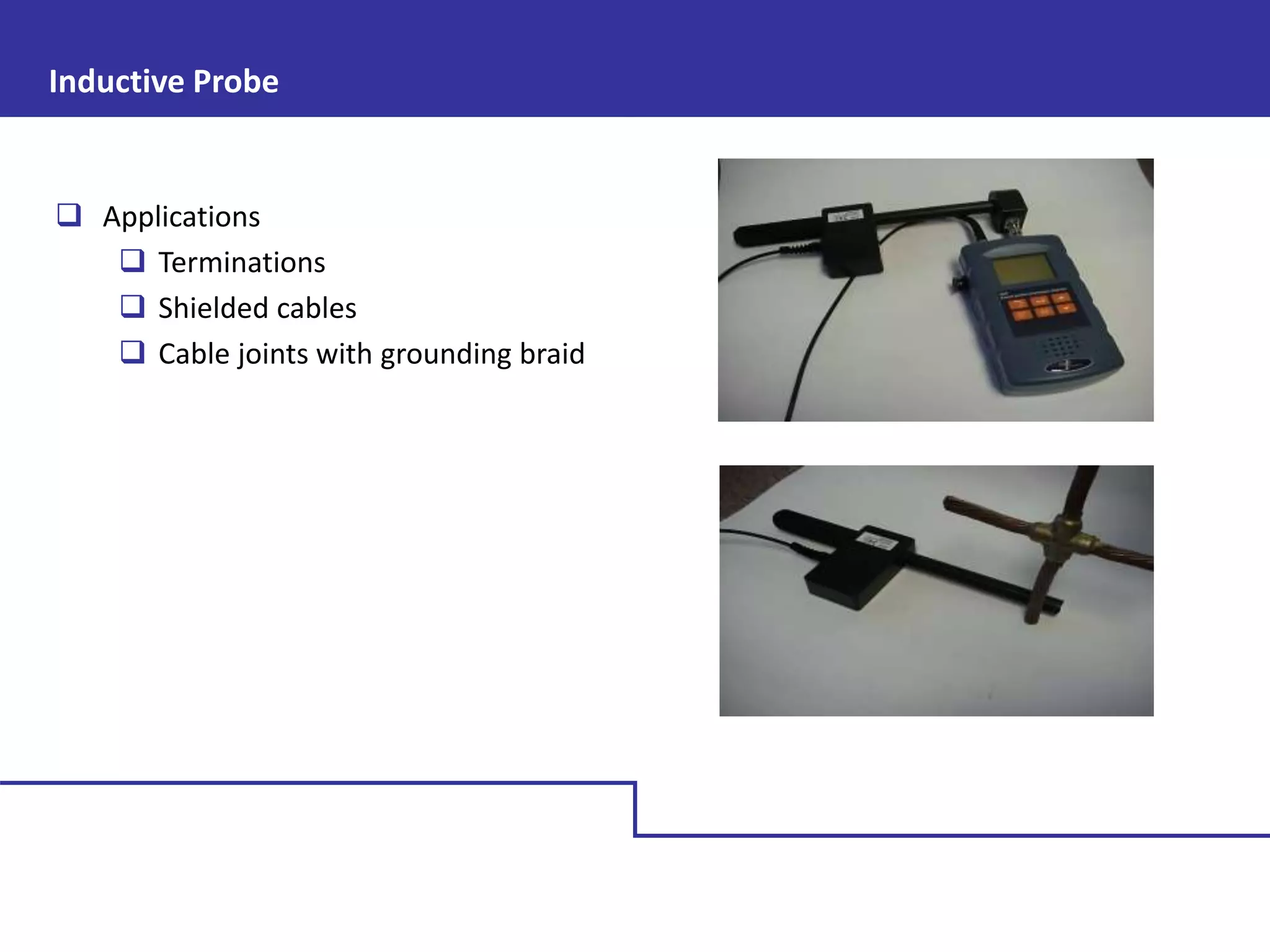This document discusses partial discharge (PD) testing methods for predictive maintenance of medium voltage switchgear. It provides definitions and explanations of partial discharge from standards bodies like IEC and IEEE. It describes the three main types of PD sources as internal, surface, and corona discharge. It then explains various online and offline PD testing methods like ultrasonic, transient earth voltage, high frequency current transformer, and the capacitance voltage divider method. Key aspects of each method like frequency ranges, sensor placement, and background noise measurement are outlined. Causes of partial discharge like cavities, electrical trees, water trees, and corona are described in detail.
